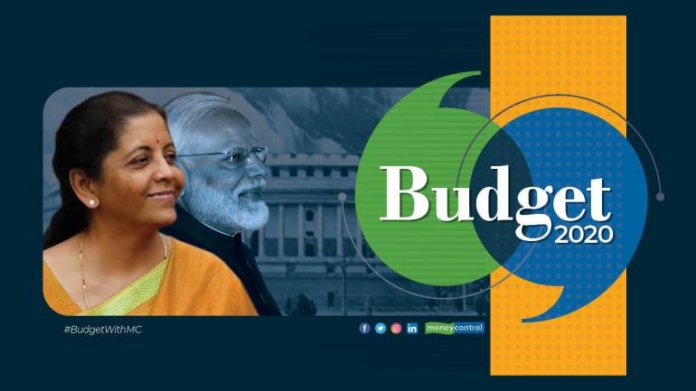
The new budget is going out of the vault in few days. This years’ budget is to be presented in the context of deepening slowdown and declining revenues for the government. These adverse trends add burden to the responsibility of the government to launch supportive measures for the economy as well as for own fiscal health. Compared to last few years’ budget there are a lot of remarkable policies, initiatives and reform measures to be taken by the government this year.
Now, given this background factors what will be the most important budget announcements for budget 2020? Following are the important budget expectations.
- Partial launch of Direct Tax Code (DTC) (likely probability is 70%)
The Direct Tax Code has been on the preparation mode since 2009. But the drafting of a new version of DTC with the takeover of the NDA government was quick. A task force led by Akhilesh Ranjan submitted its recommendations in August 2019 and the details are kept secret.
Likely chance for DTC going to be the star of budget 2020
- There is every chance that the Direct Tax Code going to be announced either in full format or in partial format. At least some major recommendations of the DTC task force especially on PIT and CIT may be implemented. The task force has drafted and submitted a new law comprising of 400 sections to replace the Income Tax Act of 1961.
- The government has kept the details of the DTC recommendations away from the public domain to keep the confidentiality of the measures to be announced in the budget.
- Finance Ministry also has acknowledged the replacement ability of the new draft.
- Some of the recommendations of the taskforce like enhancement of personal income tax slab, imposition of branch profit tax for foreign companies, harmonisation of corporate tax for domestic companies and foreign companies, abolition of Dividend Distribution Tax etc. can be made without much difficulty.
- The personal income tax slab in India need immediate restructuring as the upper slab remained constant for almost seven years. Hence, to solve this anomaly, the PIT structure can be altered.
Factors against the launch of DTC
- The DTC need experimentation and review as a tax regulation on personal income tax, corporate income tax, capital gains tax etc should be highly refined.
- Introduction low tax rates may further reduce government’s finances. Already there is a tax shortfall of around 1.5 to 2.5 lakh crores. Hence, additional revenue loss from the DTC launch may adversely affect government finances.
- Fiscal Deficit may cross 4% mark- an expansionary budget can be expected (probability 60%).
Nine out of ten economists warn on rising fiscal deficit. Understandably there is heavy risks when the government is borrowing too much to run the budget. But this time, the government has little option. Revenues are actually declining – a trend that is first time in the last twenty-seven years. Corporate income tax alone is expected to come down by 1.5 lakh crores. Disinvestment revenue targets were realised in the last two budgets. But this time, there will be a big shortfall.
At the same time, the bleeding economy need some expenditure support from the government. Hence, the government may borrow more. Not surprise if the fiscal deficit goes over 4% of GDP, because the situation warrants that. An additional factor that may tempt the government to go for an expansionary budget is almost muted support from the central bank on slowdown fight efforts.
- Enhanced slabs for Personal Income Tax and harmonisation of corporate income tax for domestic companies and foreign companies.
The upper slab in personal income tax starts from Rs 10 lakh. This has been the limit since 2013-14. Now, the government has to restructure this upper slab.
The exemption limit can be raised to Rs 3 lakh and the rebate may be retained. But phasing out of cess and surcharge on super rich may be difficult to happen.
In the case of corporate income tax, a profit repatriation tax may be introduced on companies that repatriates income from India.
- Setting up of a dedicated entity (Development Financial Institution) for infrastructure financing. Such an institution may relieve bank lending to the infrastructure sector. For funding of National Infrastructure Pipeline, strong PPP guidelines may be issued. Similarly, a dedicated wing in the government may be created for reactivating the stalled projects that is having a value of around Rs 4 lakh crores.
Raising the income limit of PMAY beneficiaries to support affordable housing.
- A government controlled stressed asset management entity to purchase and manage assets of PSBs may be created.
Chances are there for the setting up of a dedicated government run asset reconstruction agency like the Public Sector Asset Rehabilitation Agency (PARA) which was suggested earlier. In the US, the government launched Troubled Asset Relief Program (TARP) in 2008 to settle the troubled assets of the banking system. Such an effort may help to settle the NPA problem; but the fiscal cost will be high.
- Financial sector: Launch of a public credit registry with strong information sharing about defaulters can be a possibility.
The RBI Act may be amended to give complete power to the central bank to regulate Urban Cooperative Banks that are systemically important. This will relieve the responsibility of Registrar of Cooperative Societies.
- National Population Register data may be recognised for financial transaction purposes. At present, the RBI has issued guidelines to banks to accept NPR details for KYC norms. The budget 2020 may announce more steps so that statutory recognition is obtained for NPR.
- Private train operators may be allowed in Indian railways. Though this proposal is on implementation stage, more modalities will be announced in the budget.
- Draft Industrial Policy may be announced to reactivate the Make in India efforts.
- A dedicated electronic sector scheme will be launched to support domestic production. Already, the government is thinking about Rs 36000 project to encourage domestic production. (picture courtesy: money control)











